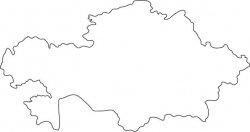
أجهزة الملاحة العربية
Your way to more knowledge
Product successfully added to your shopping cart
Quantity
Total
There are 0 items in your cart.
There is 1 item in your cart.
Total products
Total shipping
To be determined
Total
- Countries of the World
- Zip code in Jordan
- List of surahs in the Holy Qur'an
- All flags of the countries of the world
- Traffic signs in Jordan
- Population of world countries by country
- List of world capitals
- Car Brand Logos and Names
- International Calling Codes
- List of currencies of the world
- Country flags of the world with images and names
- Country codes names
- List of countries and dependencies by area
- Al-Quran Recitations mp3
- List of countries and dependencies by population
- World time zones by country
Kazakhstan
Official name: Republic of Kazakhstan
Also known as: Қазақстан Республикасы (Kazakh), Qazaqstan Respublikasy, Республика Казахстан (Russian), Respublika Kazakhstan
Capital of Kazakhstan: Astana
Area of Kazakhstan: 2,724,900 km² (1,052,100 mi²) (9th)
Population of Kazakhstan: 20,592,571 (64th) - (2024 est.)
Location: Central Asia
Languages of Kazakhstan: Kazakh (national/state language), Russian (official)
Religions of Kazakhstan: Sunni Muslim 69.3%, Christian 17.2% (Orthodox 17%, other 0.2%), Buddhism 0.1%, other 0.1%, non-believers 2.3%, unspecified 11% (2021 est.)
Organizations: United Nations, Commonwealth of Independent States
Border countries (5): China (to the southeast) 1,765 km (1,097 mi), Kyrgyzstan (to the southeast) 1,212 km (753 mi), Russia (to the north) 7,644 km (4,750 mi), Turkmenistan (to the southwest) 413 km (257 mi), Uzbekistan (to the south) 2,330 km (1,450 mi).
Coastline: 0 km (0 mi); the country is landlocked, but does border the Caspian Sea (1,894 km/1,176 mi).
Maritime boundaries: Aral Sea, Caspian Sea
Administrative divisions of Kazakhstan
Kazakhstan is divided into 17 regions and 4 cities. The regions are further subdivided into districts. The four cities, Almaty, Baikonur, Shymkent, and the capital city Astana, do not belong to their surrounding regions.
Regions: Abai, Akmola, Aktobe, Almaty, Atyrau, East Kazakhstan, Jambyl, Jetisu, Karaganda, Kostanay, Kyzylorda, Mangystau, North Kazakhstan, Pavlodar, Turkistan, Ulytau, West Kazakhstan.
Special status cities: Almaty, Astana, Baikonur, Shymkent.
Area of Kazakhstan: 2,724,900 km² (1,052,100 mi²) (9th)
Population of Kazakhstan: 20,592,571 (64th) - (2024 est.)
Location: Central Asia
Languages of Kazakhstan: Kazakh (national/state language), Russian (official)
Religions of Kazakhstan: Sunni Muslim 69.3%, Christian 17.2% (Orthodox 17%, other 0.2%), Buddhism 0.1%, other 0.1%, non-believers 2.3%, unspecified 11% (2021 est.)
Ethnic groups of Kazakhstan: Kazakh 71.0%, Russian 14.9%, Uzbek 3.3%, Ukrainian 1.9%, Uyghur 1.5%, German 1.1%, Tatar 1.1%, Others 5.2%.
Currency: Tenge (₸) (KZT)
Calling code: (+7)Organizations: United Nations, Commonwealth of Independent States
Border countries (5): China (to the southeast) 1,765 km (1,097 mi), Kyrgyzstan (to the southeast) 1,212 km (753 mi), Russia (to the north) 7,644 km (4,750 mi), Turkmenistan (to the southwest) 413 km (257 mi), Uzbekistan (to the south) 2,330 km (1,450 mi).
Coastline: 0 km (0 mi); the country is landlocked, but does border the Caspian Sea (1,894 km/1,176 mi).
Maritime boundaries: Aral Sea, Caspian Sea
Administrative divisions of Kazakhstan
Kazakhstan is divided into 17 regions and 4 cities. The regions are further subdivided into districts. The four cities, Almaty, Baikonur, Shymkent, and the capital city Astana, do not belong to their surrounding regions.
Regions: Abai, Akmola, Aktobe, Almaty, Atyrau, East Kazakhstan, Jambyl, Jetisu, Karaganda, Kostanay, Kyzylorda, Mangystau, North Kazakhstan, Pavlodar, Turkistan, Ulytau, West Kazakhstan.
Special status cities: Almaty, Astana, Baikonur, Shymkent.
Natural resources: major deposits of petroleum, natural gas, coal, iron ore, manganese, chrome ore, nickel, cobalt, copper, molybdenum, lead, zinc, bauxite, gold, uranium.

